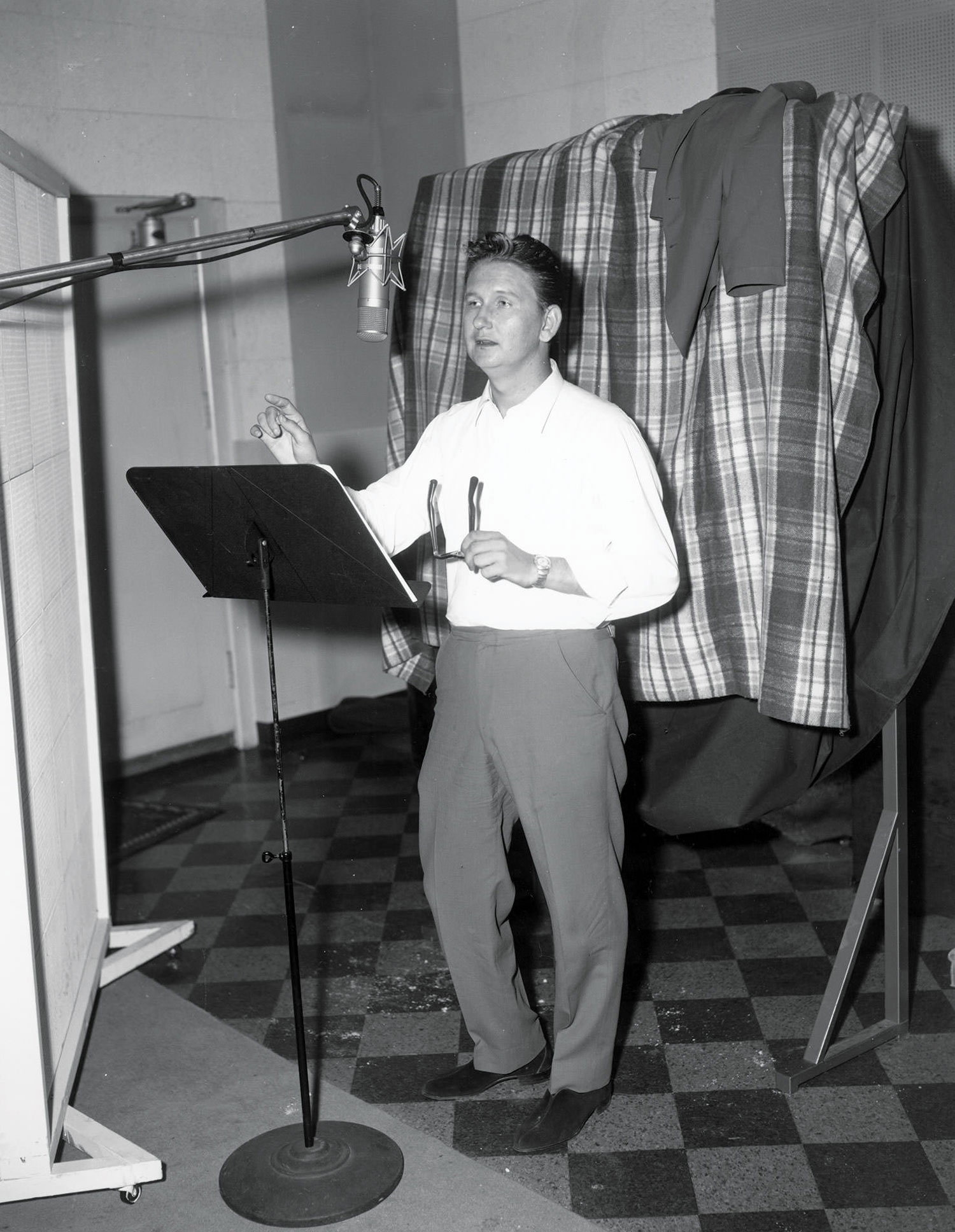1. Get in the right frame of mind
"The world is an imperfect place. Screws fall out all the time." -Frank Bender, The Breakfast Club
As soon as your studio expands to more than one cable, something can go wrong. Of course, problems wait until a client is present, or a deadline approaches. If you expect anything else you'll stress yourself into an early grave. You need to establish expectations for yourself and your clients. First, tell yourself that some things might go wrong. Otherwise you'll become upset when they do, which only makes matters worse. When you're upset you loose the ability to solve problems efficiently.
Secondly, clients have to understand that a recording studio is a big spaghetti pile of wire and electronics. Sometimes screws fall out — even at the biggest and best studios. (Of course, the longer you record, the better you become at reducing the number of issues, but they still happen). Have a policy regarding billable time when something goes down. You can always suggest the band take a food break, but don't assume problems happen at mealtime. In general, if an issue can be resolved in five or ten minutes, you can keep the clock running. Once you exceed 15 minutes, you may want to push the pause button.
2. Recreate the problem
You can't fix it if you can't cage it. You must be able to reproduce the problem in order to narrow the scope of possible solutions. Also, being able to reproduce the problem can sometimes lead to an immediate solution — e.g. lifting the mute on the "track that won't play." Try the simple things first.
3. Isolate the rootcause
In many cases, finding the source of the problem can lead to an immediate solution. Unfortunately, this is often the most difficult step. Here's where a logical approach is your best ally. Try to think like a computer. For example, some software programs solve problems by using a binary search. It may sound fancy, but a binary search is just a divide-and-conquer process that narrows the search area in half again and again until the problem is found. It's not critical that you reduce the possibilities by exactly half each time. But you must keep narrowing down options, and try to avoid going back to areas you've already tested. Eventually, you'll find the problem's source.
Be warned: There are barriers to this process:
Letting the problem escape This means ruling out an area that actually contains the root cause. When this happens, the rest of your tests will fail to find the culprit. In a pressure situation, this can frazzle you and your clients. Make sure you avoid this by methodically ruling out an area. Don't assume.
Problems that are intermittent Some recording machines are so notorious for problems that come and go, they have earned the name Most Connections Intermittent.
Stress Isolating a problem can be time consuming. Often the test required to split the options down takes the longest. Sometimes we need to rely on gut instinct if we suspect a problem is in a specific case. In those instances, it is acceptable to do a fast test to see if the problem is in a tiny area.
Not understanding the studio configuration This isn't just for visiting engineers. As soon as you connect a new piece of gear to your setup the studio configuration has changed.
On to the practical:
"The Fonzie" Sometimes you just have to hit the machine....
If a channel, cable or connection is bad, make sure you have a good one for comparison. Swapping out cables that are known to be good can help find bad ones.
Invest in some diagnostic tools. They don't need to be expensive. A suggested list includes: cable tester, flashlight, multi/volt-meter, tone generator, oscilloscope, pliers, tweezers, etc.
Make sure all connections are tight, especially on patchbay patch cables. TT bays can be notorious for this.
Trace the thunder. Think of your audio flow like plumbing. Start at the source, and work your way to the destination. Find out where the leak is. Eliminate sections of the signal flow as you check continuity. ???? Sometimes, you can rule out an area by proving the innocence of a piece of gear. For example, a pair of headphones won't work. Take the headphones to a source jack that you know is functioning. Plug the "bad" phones into the new feed. If you hear sound you can rule out the headphones as the problem.
It's hard to follow a cable through the web behind the gear rack. Try to label all of your cables on both ends. A good way to do this is to purchase a roll of cable numbering tape from an electronic supply house. It's about thirty dollars a roll, but each roll contains strips for 0 through 9, and can label hundreds of cables. Another method is to use the small laminated label printers found at most office stores. If the cable has a light colored shrink wrap at each end, you can simply write numbers with a permanent marker.
Make sure you've had enough coffee and sugar. But don't have so much that you're twitchy.
Learn how your gear works, especially complex items like mixers (or large consoles), tape machines, digital clocks, audio routers and other devices with lots of options or menus. Often you just have the wrong setting, a solo button is on, different signal paths are selected, etc.
Before doing the full isolation drill, check over the simple stuff, including: making sure the item is powered, making sure it's actually turned on, seeing if any mute or bypass switches are depressed, etc.
If you're using a computer, save your work and reboot.
See if you have anything interfering with your item. For example, do you have a screen saver or anti-virus program running on your PC? Is your converter obtaining synch from the wrong source? Does your cable have a gash in the shielding? Is there a cell phone near the speaker? Is the phase switch enabled?
Don't be afraid to call for help if you're in over your head. If you call or email most of the manufacturers that advertise in Tape Op, you're likely to get a response from the owner or designer! But don't abuse this situation. Customer support is a privilege, not a right.
Never mess with dangerous voltages unless you are 101% sure you know what you're doing!
Feel free to unplug units from their AC source if you are concerned about the possibility of shock. (But remember to turn them on when you're testing your hunches).
Protect your ears! Never put your ear to a speaker or other device that could produce an explosive sound.
Keep manuals and schematics in a binder nearby. Signal flow diagrams and setup procedures can often save the day.
Should time or money preclude a full troubleshooting process, be prepared to implement a back-up plan.
4. Repair the problem
This can be the simplest part, assuming the issue is not something major. Remember, if you have to take a piece of gear apart, you may want to take pictures of each disassembly stage. Otherwise, you might forget how to put the darned thing back in one piece.
5. Test your solution
Like repairing the problem, this may seem obvious. However, it's important that the solution didn't cause another problem. Make sure the problem goes away, but the rest of your chain remains in good order.
6. Learn from the experience
Tell your studio mates and colleagues what you've learned. Post findings on some of the various discussion forums. If you can help others avoid the mistakes you've made, you're helping the community make better recordings. You'll also improve your karma.
Document your findings. Make notes and put them in a safe place. Make a repair log book. This can be as fancy as a database or spreadsheet program, or as simple as a yellow sticky note on the inside of the equipment manual. Who can remember each and every setting for the flux capacitor? If you need that solution in six months, the repair will be documented and waiting for you.
Conclusion
Recording studios can be complex environments. It is not uncommon for things to break, malfunction or die. By developing a structured approach to troubleshooting you'll minimize your downtime and spend more time doing what we all want to do: making recordings. If you practice these steps, pretty soon they'll become intuitive.
Good luck!




